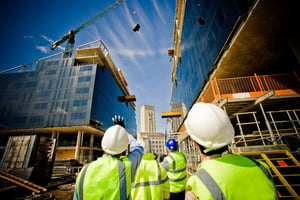The construction industry is one of the most important industries in the United Kingdom. It employs...
How construction culture impacts worker happiness/company output
A recurring topic that I bring up in my articles is the impact company culture has on the output of a company as well as employee satisfaction and retention. To better understand the topic of culture in construction - and hopefully inspire changes in the future - a wide range of factors must be analysed.
Construction as an industry has always been much more reactive than proactive on a micro and macro scale. We often see adjustment to new legislation occurring after incident forces change, as opposed to simply staying ahead of the curve. On a case-by-case basis, each contractor has to exist in a high-pressure environment; putting out fires as and when they flare up, instead of making sure they don’t get the chance to. A big emphasis is placed on costs, deadlines, and performance with very strict hierarchies in place, largely out of necessity due to the scale of the projects undertaken, though in some cases this tall structure can become excessive and difficult to manage.
On top of this, construction has always had issues recruiting women. This has resulted in an environment largely dominated by male workers, indirectly leading to environments that cause many mental health issues when paired with the general high-pressure crucible that construction already is.
As an industry, construction has recently been wrestling with increasing the amount of young talent attracted to the industry - and subsequently available to work in it. In part this is due to half the population feeling construction isn’t for them based on gender, alongside other turn offs including several negative stereotypes and a lack of knowledge about the industry as a whole. This has led to a workforce with a high average age, which whether intentional or not creates a certain type of environment that becomes harder and harder to break into as the problem compounds.
How each contractor is managed on an individual basis also plays a role in the perception of the industry and its many subsectors. An adhocracy is not a viable culture for much of construction; the freedom it would grant would not lead to structures coming together. However, several contractors have reputations for high turnover and poor working conditions because they go too far the other way and eliminate almost all freedom - micromanaging every aspect of work and leading to resentment.
It has been well documented that a happier workforce often performs at a much higher level than those who are in a situation they don’t like. This topic has been surrounded by studies for hundreds of years, with notable examples like the Hawthorne study: showing that employees perform better when they believe management actually cares about their welfare, as opposed to seeing them as a number. A 2015 study by the Social Market Foundation also shows that performance is highest when happiness is high.
This may not mean that more projects are completed each year, but it might mean that fewer mistakes are made when people are happy. This could result in fewer delays being encountered in the process, not only lowering costs across the board but improving standing and relations in the long-term, which would inevitably lead to more projects and better reputation.
This doesn’t mean that every employee should be treated as royalty to achieve higher output, but creating an environment where skill and achievement is recognised and employees are treated as people with breaking points would go a long way in not only raising productivity, increasing retention, and potentially lowering mental health struggles related to the construction industry.
Bringing in more young people and women could also influence the culture with an injection of new ideas as well as opening up the industry for a more balanced representation of not only physical features but ideas, opinions and ways of working. This would reduce the pseudo echo chamber that currently exists in the much narrower group of people currently being brought in.
A degree of freedom should also be afforded to many of those in the construction industry, as for the most part these are highly qualified and very experienced professionals, many of whom have specialist knowledge in their chosen field. This doesn’t mean meetings and quality checks shouldn’t be carried out, but taking a more hands-off approach can lower stress across the board which improves the quality of work and the working environment as a whole.
As with many industry-wide issues, there’s no simple fix as a great degree of cultural engineering must take place to tackle the problem as effectively as possible. However, committing to simple changes such as creating an environment that praises strong performance can improve a range of measurable and less tangible metrics. Changing the structure to a flatter model may not work for construction due to the necessity of many of the roles, but increasing the collaboration and integration of the departments in this model and injecting new talent can eliminate hostility and improve efficiency as communication and cohesion rise.




